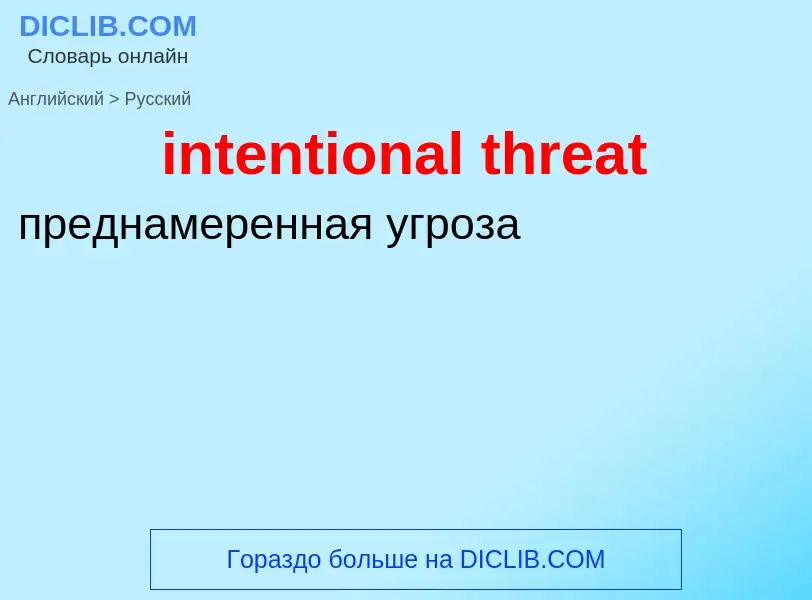Vertaling en analyse van woorden door kunstmatige intelligentie ChatGPT
Op deze pagina kunt u een gedetailleerde analyse krijgen van een woord of zin, geproduceerd met behulp van de beste kunstmatige intelligentietechnologie tot nu toe:
- hoe het woord wordt gebruikt
- gebruiksfrequentie
- het wordt vaker gebruikt in mondelinge of schriftelijke toespraken
- opties voor woordvertaling
- Gebruiksvoorbeelden (meerdere zinnen met vertaling)
- etymologie
intentional threat - vertaling naar russisch
- access threat
- accidential threat
- active threat
- advertent threat
- compromise threat
- computer-related threat
- denial-of service threat
- eavesdropping threat
- external threat
- inadvertent threat
- insider threat
- intentional threat
- malicious threat
- outsider threat
- passive threat
- playback threat
- reliability threat
- security threat
- third-party threat
- unintentional threat
- virus threat
- wire-tap threat
Definitie
Wikipedia
In computer programming, Intentional Programming is a programming paradigm developed by Charles Simonyi that encodes in software source code the precise intention which programmers (or users) have in mind when conceiving their work. By using the appropriate level of abstraction at which the programmer is thinking, creating and maintaining computer programs become easier. By separating the concerns for intentions and how they are being operated upon, the software becomes more modular and allows for more reusable software code.
Intentional Programming was developed by former Microsoft chief architect Charles Simonyi, who led a team in Microsoft Research, which developed the paradigm and built an integrated development environment (IDE) called IP (for Intentional Programming) that demonstrated the paradigm. Microsoft decided not to productize the Intentional Programming paradigm, as in the early 2000s Microsoft was rolling out C# and .NET to counter Java adoption. Charles Simonyi decided, with approval of Microsoft, to take his idea out from Microsoft and commercialize it himself. He founded the company Intentional Software to pursue this. Microsoft licensed the Intentional Programming patents Simonyi had acquired while at Microsoft, but no source code, to Intentional Software.
An overview of Intentional Programming as it was developed at Microsoft Research is given in Chapter 11 of the book Generative Programming: Methods, Tools, and Applications.


